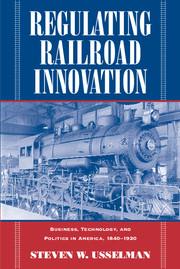Preface and Acknowledgments
Published online by Cambridge University Press: 12 August 2009
Summary
Some two decades ago, when I was first tilling the soil that would ultimately yield this book, a group of graduate students at the University of Delaware met to welcome a new member of the faculty. In the fashion of academia, each of us by way of introduction offered a brief synopsis of our research. When my turn came, I eagerly discussed my imminent departure for Chicago and the Newberry Library. There, in the archives of the Chicago, Burlington and Quincy Railroad, I hoped to discover precisely how late-nineteenth-century executives had “managed” technological change. “Oh,” replied the bemused new arrival with devilish feigned innocence, “did they manage it?” As heart plunged toward rapidly tightening gut and mind sifted feverishly for a suitable response, I sensed for the first time the slippery indeterminancy of my subject. “Well,” I shrugged at last, “they certainly tried.”
This brief exchange has haunted me ever since. It did not, in fact, prove difficult to confirm that railroad executives sought in a variety of ways to make technological innovation more predictable and routine. My doctoral dissertation readily documented many of their efforts. It described how executives at the Burlington and several other lines developed managerial structures that helped them evaluate new technology and monitor its diffusion. It traced the increasing prominence of college-trained engineers and of engineering societies in the technical affairs of the industry.
- Type
- Chapter
- Information
- Regulating Railroad InnovationBusiness, Technology, and Politics in America, 1840–1920, pp. xi - xviPublisher: Cambridge University PressPrint publication year: 2002



